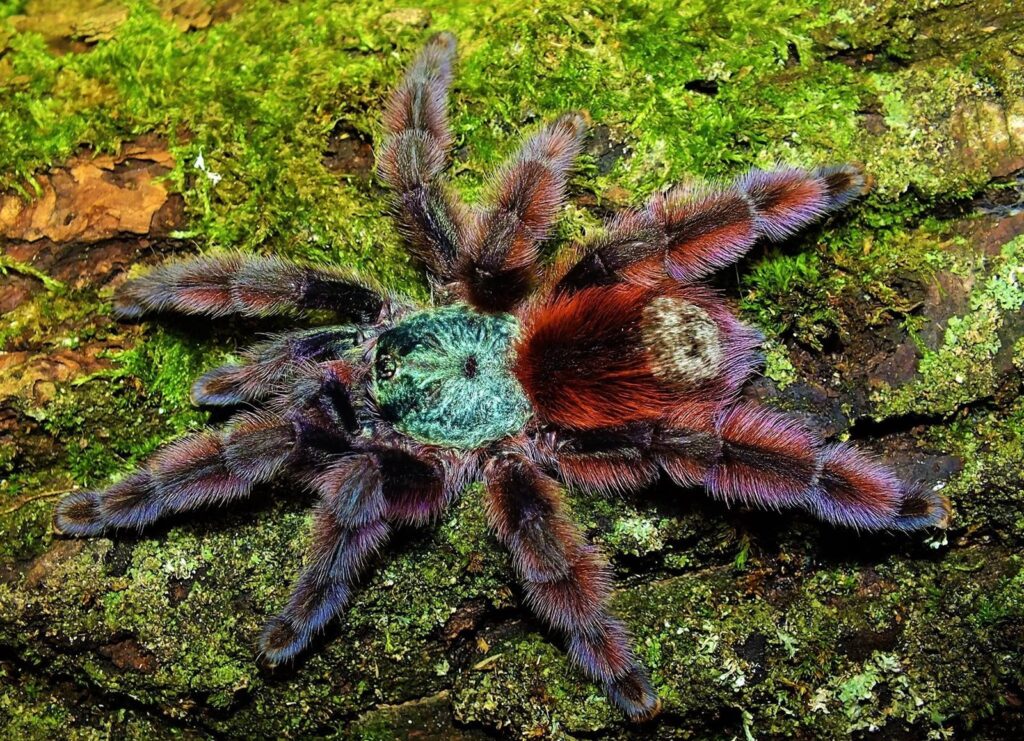The Antilles Pink Toe Spider, scientifically known as Caribena versicolor, is a captivating arachnid that has gained popularity among tarantula enthusiasts. This arboreal species, native to the Caribbean islands, is renowned for its stunning color changes throughout its lifespan, from a vibrant blue as a spiderling to a mesmerizing combination of metallic reds and greens as an adult. Understanding the characteristics and proper care of the Antilles Pink Toe Spider is crucial for ensuring its health and well-being in captivity.
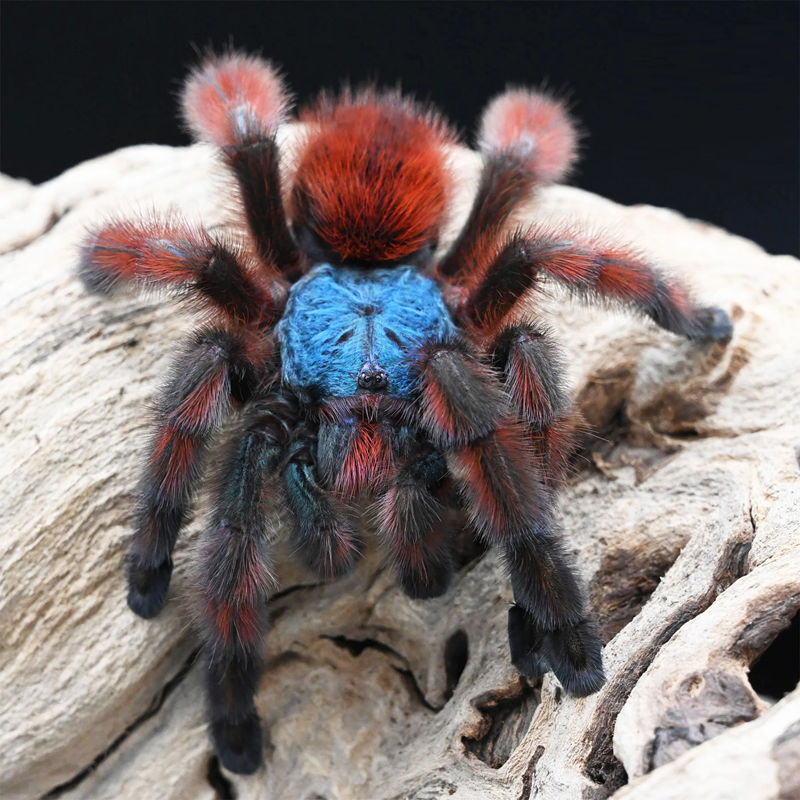
Overview of Caribena versicolor
Scientific Classification
- Family: Theraphosidae
- Genus: Caribena
- Species: Caribena versicolor
Native Habitat
The Antilles Pink Toe Spider is endemic to the Caribbean islands, specifically Martinique, Guadeloupe, and Puerto Rico. These islands are characterized by tropical rainforests with high humidity and warm temperatures throughout the year.
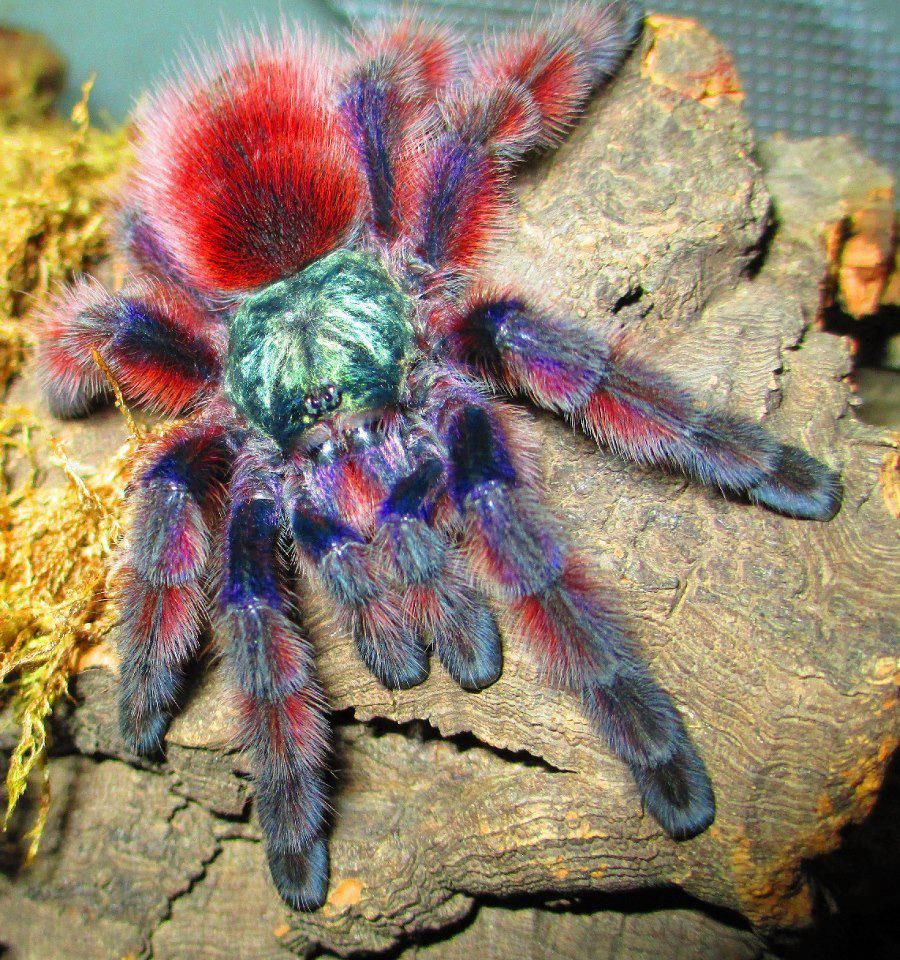
Physical Characteristics
Size and Appearance
Caribena versicolor is a medium-sized tarantula, with females reaching a body length of up to 6 inches (15 cm) and a diagonal leg span (DLS) of 6 inches. The species is known for its striking color changes, starting off as a bright blue spiderling and transitioning into a stunning combination of metallic reds and greens as it matures.
Lifespan
In the wild, Antilles Pink Toe Spiders have a lifespan of up to 12 years for females and 2-3 years for males. In captivity, with proper care, they can live similar lifespans.
Behavior and Temperament
Activity Patterns
Caribena versicolor is an arboreal species, meaning it lives primarily in trees and constructs intricate web structures. They are known to be active climbers and web-builders, often creating funnel-shaped webs in the wild.
Temperament
The Antilles Pink Toe Spider is generally considered a docile species, making it a popular choice for beginners. However, as with any tarantula, it’s essential to handle them with care and caution, as they can be fast-moving and may jump if startled.
Caribena versicolor housing requirements
Cage Setup
When housing Caribena versicolor, it’s crucial to provide a vertical enclosure that mimics their arboreal habitat. A 10-gallon tank placed on its side or a similar-sized acrylic or plastic enclosure is suitable for a single adult. The enclosure should have a secure, front-facing or side-facing door to minimize disturbance to the spider’s web.
- Substrate
A suitable substrate for Caribena versicolor includes a mixture of peat moss and coconut fiber, which should be at least 2-3 inches deep. This substrate helps maintain the appropriate humidity levels and allows the spider to burrow if needed.
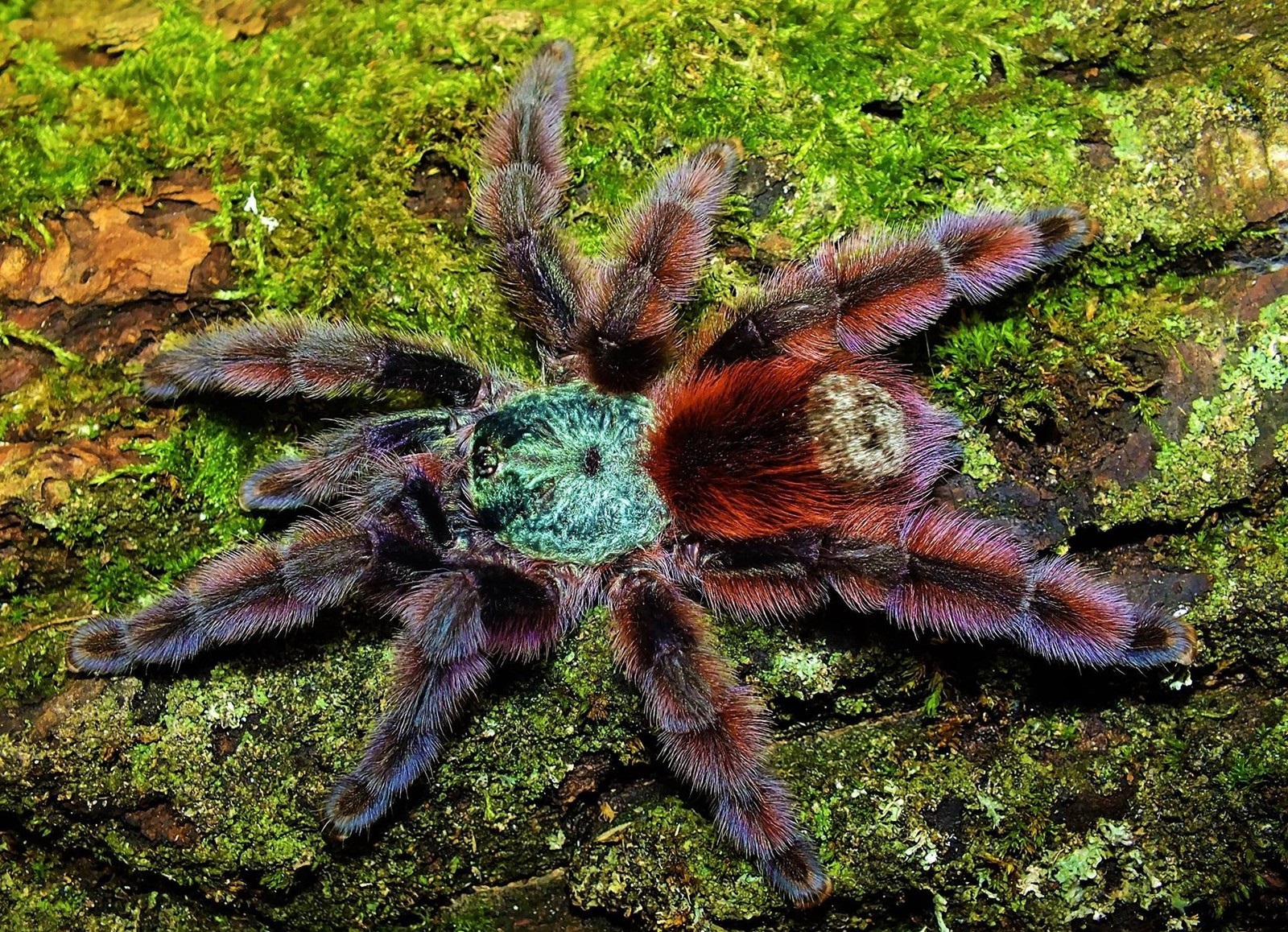
Environmental Enrichment
Providing branches, cork bark slabs, and other climbing structures is essential for Caribena versicolor, as they are avid climbers and web-builders. These structures also offer hiding spots and promote natural behaviors.
- Temperature and Humidity
Caribena versicolor thrives in warm temperatures between 75-85°F (24-29°C). Maintaining a humidity level between 60-80% is recommended, with a slight humidity gradient in the enclosure.
Feeding and diet of Caribbeanna versicolor
Dietary Needs
Caribena versicolor is a carnivorous species that feeds on a variety of invertebrates, such as crickets, roaches, and mealworms. It’s essential to provide appropriately sized prey that is no larger than the spider’s abdomen.
- Feeding Frequency
Juvenile Antilles Pink Toe Spiders should be fed every 5-7 days, while adults can be fed every 7-10 days. Adjust the feeding frequency based on the spider’s size and activity level, ensuring it maintains a healthy weight without becoming overweight.
Hydration
Provide a shallow water dish in the enclosure and mist the substrate lightly once a week to maintain humidity levels. Ensure the water dish is shallow enough for the spider to drink from without the risk of drowning.
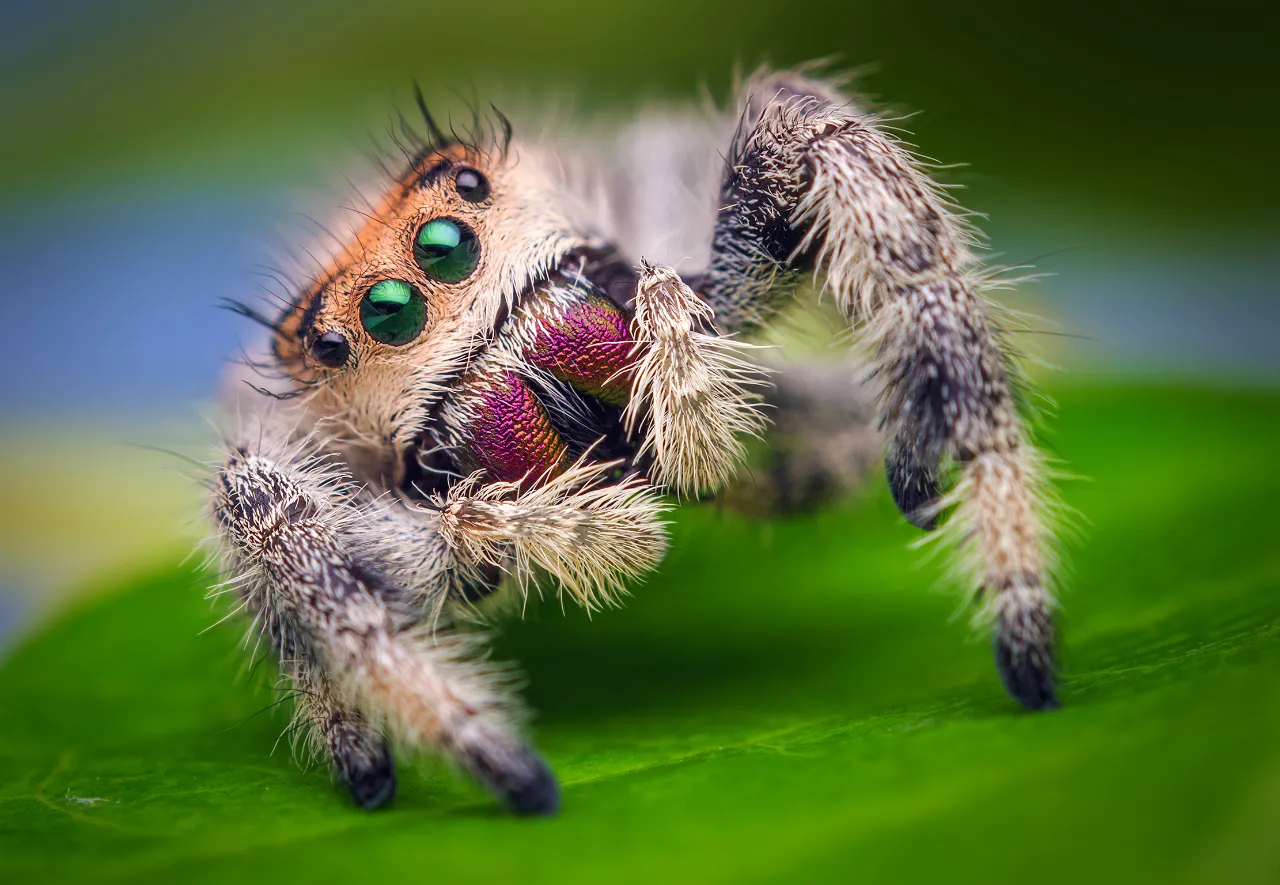
Health and Maintenance
Common Health Issues
Caribena versicolor may be susceptible to health problems such as molting difficulties, fungal infections, and respiratory issues if the enclosure conditions are not properly maintained. Monitor the spider’s behavior and appearance regularly for any signs of illness or stress.
Regular Care
Perform routine maintenance by spot-cleaning the enclosure as needed and performing a full substrate change every 3-4 months. Ensure the water dish is clean and filled with fresh water at all times.
Reproduction and longevity of Caribbeanna versicolor
Reproduction
Breeding Caribena versicolor requires careful consideration and experience. The mating process involves introducing a mature male to a mature female’s enclosure, allowing them to interact and mate. The female will then lay an egg sac, which she will guard until the spiderlings emerge.
Lifespan in Captivity
With proper care and maintenance, Antilles Pink Toe Spiders can live up to 12 years for females and 2-3 years for males in captivity. Factors such as diet, enclosure conditions, and overall health can impact the spider’s lifespan.
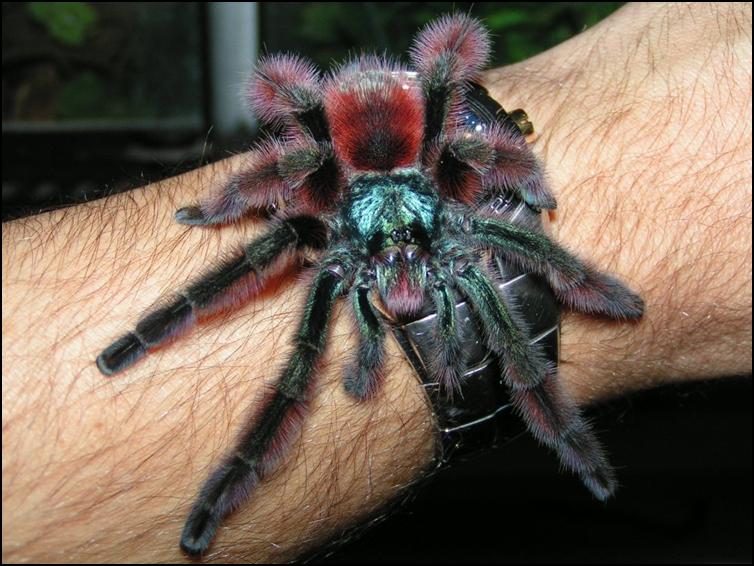
Conclusion
The Antilles Pink Toe Spider, Caribena versicolor, is a captivating and relatively docile species that makes an excellent addition to any tarantula enthusiast’s collection. By understanding its characteristics, habitat requirements, and proper care techniques, hobbyists can ensure their Antilles Pink Toe Spiders thrive in captivity. Remember to always prioritize the spider’s well-being and handle them with care and respect.
FAQs
Can Caribena versicolor be handled?
- Caribena versicolor is generally considered a docile species, but it’s essential to handle them with caution and only when necessary. They can be fast-moving and may jump if startled.
How often should I feed my Antilles Pink Toe Spider?
- Juvenile Caribena versicolor should be fed every 5-7 days, while adults can be fed every 7-10 days. Adjust the feeding frequency based on the spider’s size and activity level.
What is the ideal enclosure size for an adult Antilles Pink Toe Spider?
- A 10-gallon tank placed on its side or a similar-sized acrylic or plastic enclosure is suitable for a single adult Caribena versicolor.

